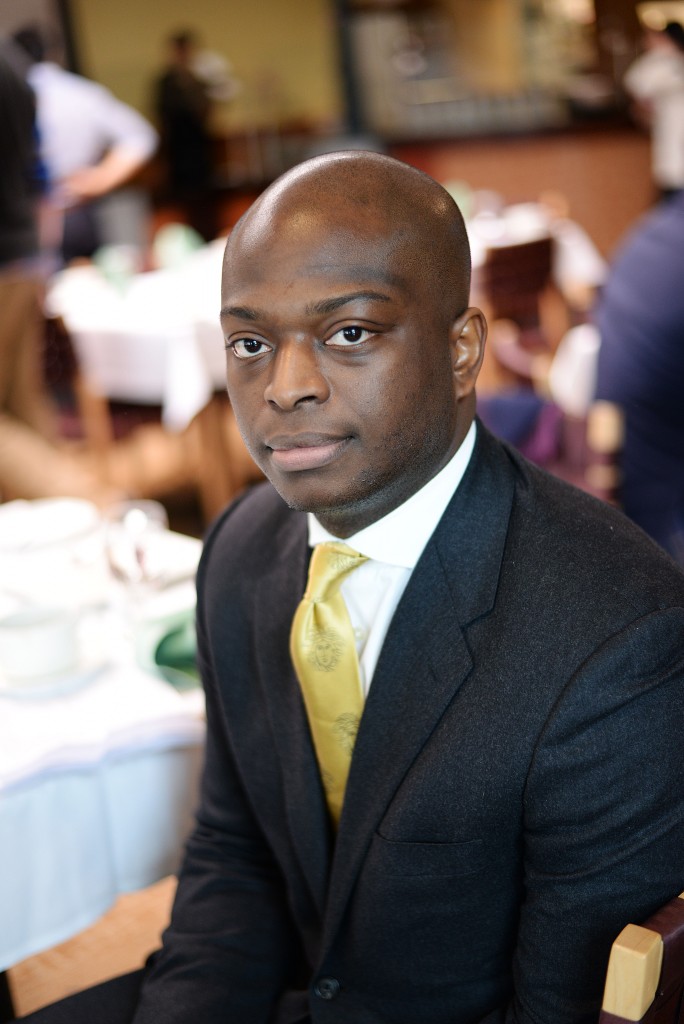
Pipe Dream sat down with Akili Tommasino, curatorial assistant at the MoMA, before his TEDx speech. This interview has been edited for length and clarity.
Pipe Dream: Why did you decide to come speak today at Binghamton University?
Akili Tommasino: I was invited by a friend of a friend, and I’ve never done anything like this. I’ve given lectures, I’ve spoken to audiences of students in several different contexts, but never without a podium or that wasn’t like an art history lesson. I thought it would be interesting to synthesize my thoughts on the kind of work that I do without actually giving a lesson, but [presenting] the theory of what drives me and my passion for people — especially young people — to be interested in high culture.
PD: How do you define ‘high culture’?
AT: High culture consists of what has conventionally been considered the most privileged aspects of cultural production. They’re privileged because people with power deem them important, and it exists in a range of cultural arenas. From literature, dance, music to the visual arts — which is my primary focus.
PD: How did you decide upon your topic, and why is high culture important for students to understand?
AT: This is a topic that’s very important and personal to me. I am someone who grew up frequenting museums in a family that frequented museums; my mother took me to the Brooklyn Museum several times a week as a child, which might’ve been excessive, but it stuck. I used to cut school in high school to go to the Met and the Guggenheim. I was a football player, so I never used to tell my friends what I was doing when I skipped class. But now, working in museums, I know that there’s a perceived disconnect between young people and the imposing aspects of museums. I’m interested in breaking down those perceived barriers, because museums need young people to survive into the future; [museums] preserve and protect what they consider the best of cultures, and it’s problematic if today’s young people don’t see it as relevant to them.
PD: How exactly do you think cultural institutions like the MoMA or the Met can become more accessible for young people?
AT: Arts funding has been slashed, and arts have been cut out of curriculums. Intensifying connections between the museum and schools — especially public schools — is a major arena for developing connections between the museum and the public going into the future. In addition to the inequity in having diverse visitors, there’s a generational gap in museum visitor-ship. The key is to get them to visit young.
PD: How did your past experiences lead you to where you are today at MoMA?
AT: I grew up very close to the Brooklyn museum, so it instilled in me that the museum was like a second home. I didn’t really know what a curator was, but I knew from very early on that I was interested in whoever decided what went on the walls and how the story would be told. So it’s really been a lifelong passion for art and art institutions that’s lead me to where I am. But I would also say the opportunities I’ve been given along the way; I studied abroad in high school, i went to Italy at 15, and having access to places like the Uffizi [Gallery] and other places in New York made the world seem much larger. But I always wanted to go back to New York; I worked in several museums abroad, so I jumped at the chance to be back when I was offered the position at MoMA.
PD: What types of opportunities are you trying to create for young people in your arts initiative with Prep for Prep?
AT: I was an alumnus of Prep for Prep, which is a gifted-education program based in New York City. The program offers opportunities in more traditional disciplines for middle school through high school to college students; for instance, I interned at a law firm in high school. But like I mentioned earlier, I would cut school to go to museums, so typically there haven’t been many options in the arts for students and alumni of the program. But there are quite a few alumni like myself who found themselves working in the arts, so I co-founded this group with other alumni to first convene and see what we’re all doing in the world of art, and to open up new opportunities for current students, from internships to designing an Art World 101 course. One of the primary factors that determines why there are so few minorities in cultural institutions is a lack of exposure at an early age to the options that are available in the arts.
PD: Who are some of your greatest inspirations?
AT: In the museum field, I’ve been privileged to have some really great mentors. I’ve interned in museums since my sophomore year of college, and I’ve worked with really great people. I’d say one of my mentors and very good friends who is a curator at the Museum of Fine Arts in Boston, Frederick Ilchman, has been a really great supporter. There are other people in the field who I really look up to and have gotten to meet, including Thelma Golden at the Studio Museum in Harlem. And of course, the people I work with at my own institution.


